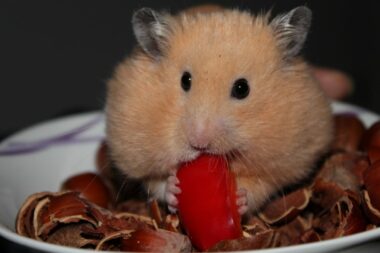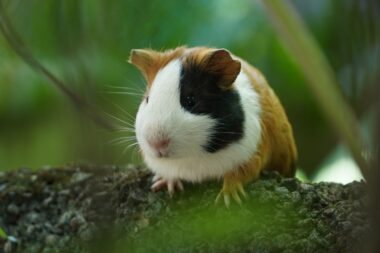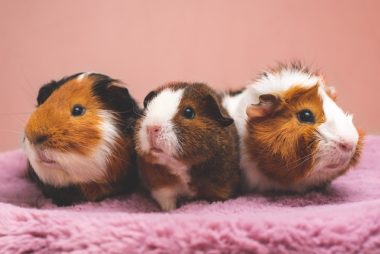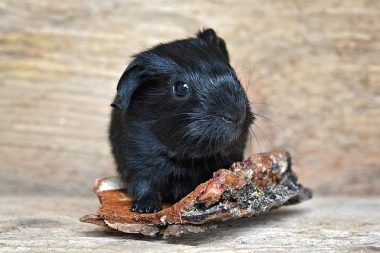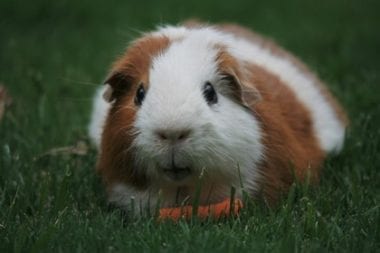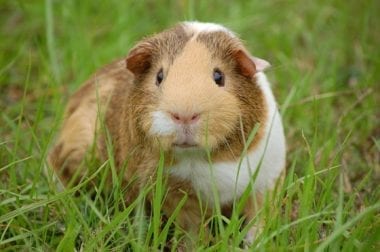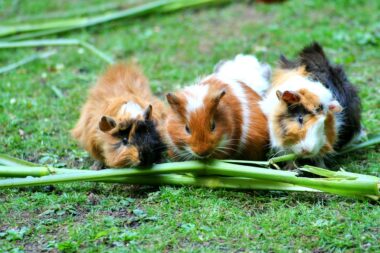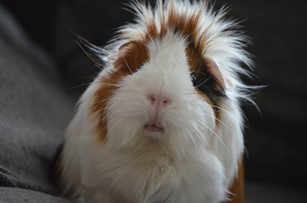There is something alluring about the American guinea pig. These tiny, cute and cuddly rodents make excellent pets for children and adults alike. Unlike larger animals, the American guinea pig does not require a lot of maintenance. With a proper cage, equipped with some facilities for exercise and entertainment, your little pet will be happy to be with you. Just do not smother it too much!
As per the American Cavy Breeders Association, it is the oldest known guinea pig breed which has been domesticated. Although the breed of American guinea pig has its origins in South America, the real origin of its name is untraceable. In certain regions of the world, it is also called “English guinea pig”. The smooth coat of this guinea pig along with short hairs makes it instantly recognizable. In fact, when most people hear the words “guinea pig” they automatically picture the American guinea pig.
Mild-tempered and easy-going, these little pets will keep you and your family entertained and comforted. By learning more about these adorable rodents, you will be able to take better care of them.
Basic Description of the American Guinea Pig
An average American guinea pig can live between 5 and 7 years. A healthy guinea pig will weigh around 2 to 3 pounds (1.36 kg), unless they have been starved or overfed. They can grow up to 8 to 19 inches (ca. 48 cm). The hair of the American guinea pig is short and straight. This gives a smooth texture to their coat during petting or caressing. The color of the coat can come in a variety of shades, often forming patches of different colors.
A healthy specimen has a rectangular shape which almost resembles a solid brick. Other breeds of guinea pigs share the same body shape. The American guinea pig has a roman-like, rounded nose with round, large ears. Their legs are quite small in comparison to the rest of their body, which gives them a slightly clumsy movement that people find adorable. Like most other guinea pig breeds in the world, the American guinea pig lacks a visible tail.
Arguably, the most popular guinea pig in the world, these pigs are also the oldest. When it comes to tracing the origins of guinea pig breeds, the American guinea pig is considered one of the original three breeds as per the American Cavy Breeder’s Association. Some research claim that they were first domesticated in the Andes around 5000 BC. Although nobody knows for sure, the American guinea pig could be the descendant of the Tschudi Guinea Pig, a breed native to South America.
Color Variations in the American Guinea Pig
The American Rabbit Breeder’s Association (an organization related to American Cavy Breeder’s Association) has identified over 20 recognizable colors found on the American guinea pig. These colors can be categorized into five groups –
The Self Group
Contains colors – black, beige, cream, chocolate, red, red-eyed orange, lilac and white.
The Agouti Group
Contains colors – golden agouti, dilute agouti and silver agouti.
The Solid Group
Contains colors – roan, brindle, golden solid, dilute solid and silver solid.
The Tan Pattern Group
Contains colors – dark blue, black, lilac and chocolate.
The Marked Group
Contains colors – Dalmatian, broken color, Himalayan, Dutch, tortoise shell and white.
History of the American Guinea Pig
The scientific name of the common domesticated guinea pig is Cavia porcellus. It belongs to the Cavia genus in the family Caviidae. According to research, the American guinea pig and other guinea pig breeds are not a naturally found wild species. That means, similar to dogs and cats they exist due to domestication and crossbreeding.
Andean tribes of the South American region (consisting of present day Ecuador, Colombia, Bolivia and Peru) are known to have first domesticated guinea pigs almost 5000 years ago. Initially, these rodents were kept as livestock for food. Some archaeological excavations carried out in Ecuador and Peru discovered statues (dating back to around 500 BC) which depict guinea pigs. The ancient people of Peru, known as Moche, worshiped animals as deities. They used depictions of guinea pigs in their art.
Guinea pigs have also played a significant role in folklore traditions. They were frequently used as gifts to exchange between households. Many old religious rituals and social customs involved sacrificing a guinea pig. Some folk doctors (called curanderos in Latin America and the United States) use guinea pigs to diagnose diseases like typhus, arthritis, jaundice and rheumatism.
Even European art has some depictions of this cute rodent. The oldest known illustration of a guinea pig is in a painting which dates back to 1580. The painting shows a girl with a guinea pig. Now, that painting is preserved in London’s National Portrait Gallery.
Personality of the American Guinea Pig
It is important to understand that like people, animals too have individual character traits. But, overall the American guinea pig is a very social and mild-mannered animal. It is especially famous for its relaxed, laid back attitude. This means that the guinea pig is not aggressive and will not bite its owners.
But a lot can change depending on how the guinea pig was raised. If the environment is hostile, it can develop irritability, timidity and aggression. If you treat it well, feed it on time and play with it regularly, your American guinea pig can grow up to be curious, enthusiastic and friendly. Ensuring that your pet is socialized with people at a young age will make it more comfortable around strangers.
Guinea pigs in general do not settle well with other species, especially if the other species is larger in size. Dogs and cat can often view guinea pigs as prey. They can also accidentally stomp or sit on the rodent and cause lethal harm. Keeping guinea pigs with other smaller animals like hamsters, gerbils and rabbits is also not safe as these animals carry diseases.
Another important thing to remember is that guinea pigs startle easily. This can distress them. Ensure that your pets can see you approaching them from a distance, so they are comfortable.
Health and Care Instructions
The nutrition and dietary requirements for American guinea pigs is similar to other guinea pig breeds. Clean and good quality timothy hay is beneficial to them. Make sure you supply enough of it. This food has high quantities of fiber, aids healthy digestion and also helps in wearing their teeth down.
As per the guidelines issued by the organization Small Animal Vet Hospital, a typical American guinea pig must consume vegetables every day. The amount of vegetables must make up for around 20 per cent of the guinea pig’s total body weight. That amounts to about one cup. Most of the vegetables in that cup must be green. Put a little portion of colorful vegetables (like carrots) for adding vitamin C to your guinea pig’s diet. To ensure that the vitamin C does not deteriorate, give your pet freshly chopped vegetables.
Food pellets made specifically for guinea pigs and imbued with vitamin C are also important. Feed your guinea pig at least a quarter cup of these nutritious pellets to meet their dietary requirements. Look for a good brand. Whenever in doubt, talk to a practicing veterinarian.
If you wish, you could feed your little pets some fruit. But do not use them as an alternative to vegetables. Also, give them fresh fruit to preserve their vitamin C content.
Exercise and Training

Do not let the slow and laid back attitude of your American guinea pig fool you. These rodents are capable of staying active for around 20 hours every day. To allow them to remain fit and healthy, have enough space for movement inside their cage. Guinea pigs are poor climbers. So their cage should be spacious with an open area that’s levelled. Do not get them a compartmentalized, multilevel cage. They are not ferrets and will hate it.
Your little pet is actually pretty smart. They love playing and after spending some time with you, they can tell what you need from them. When your guinea pig is older by a few weeks, you can start training it to learn some tricks. They are not as clever as dogs, but be patient. With the lure of tasty treats and your kindness, they will learn to follow some of your commands.
You can train them to –
Use the Litter Box
Place the litter box inside the guinea pig’s cage. Drop some pellets and timothy hay in the box. This will attract your pet. Every time the guinea pig goes to the litter box, create some noise or sound and give a tasty treat to it.
After your training is successful, your guinea pig will start using the litter box. It will continue to do so for the rest of its life.
Stand up
Take a treat and hold it above the guinea pig’s head. Repeat the word ”Stand” again and again. The guinea pig will try to stand on its hind legs to reach the treat. Repeat this twice every day. Very soon, your pet would be trained to get up on hearing the word “Stand” without being lured by a treat.

